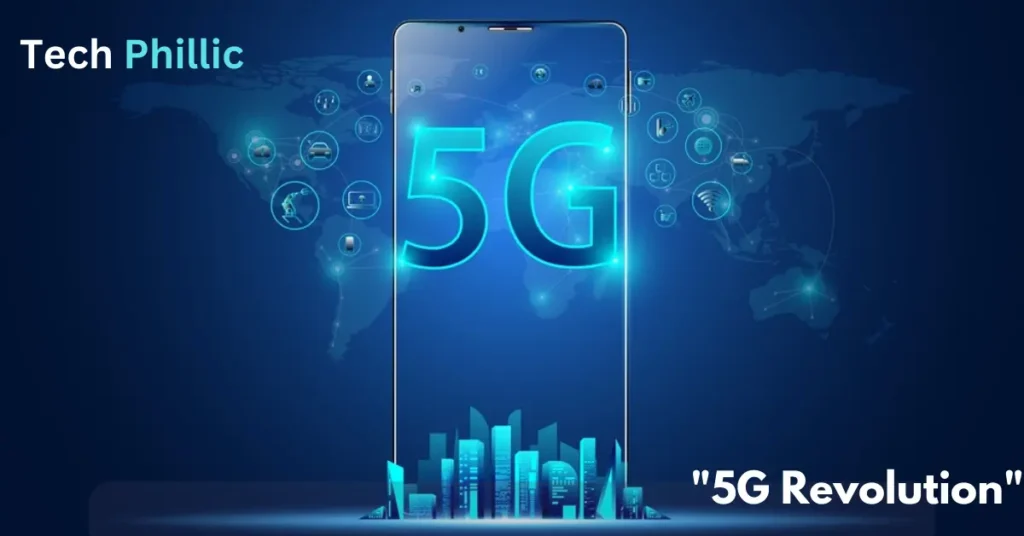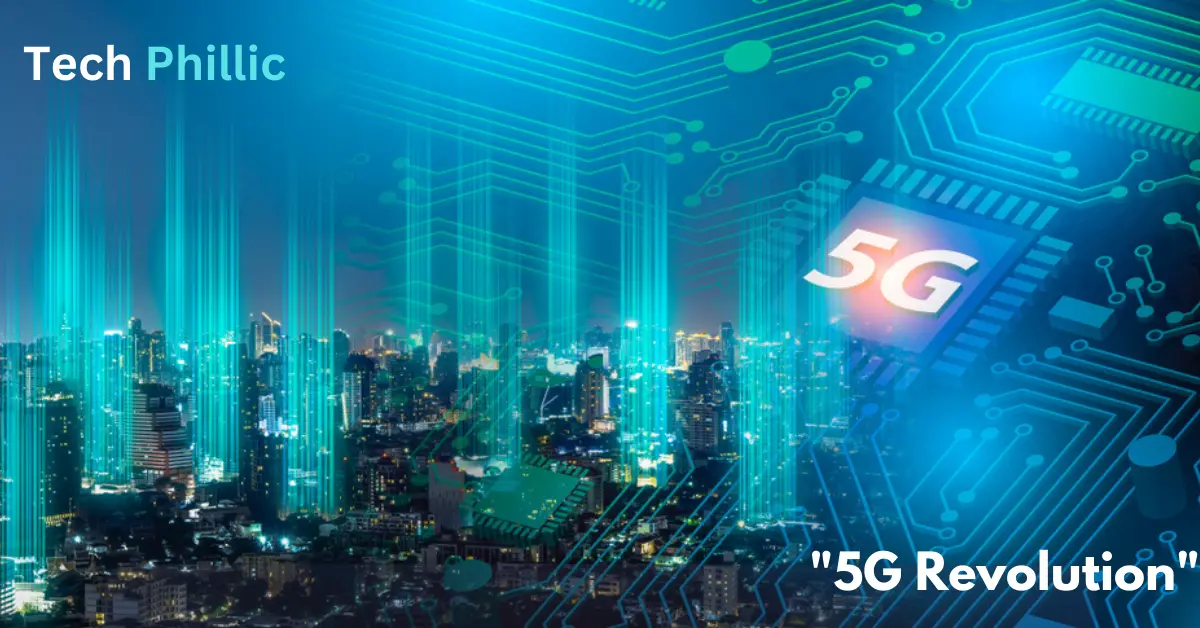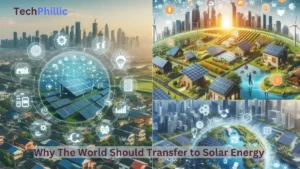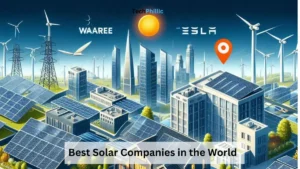What is 5G Revolution?
5G is a revolution in wireless technology that is transforming the way we live and work. The faster speeds, lower latency, and greater capacity of 5G networks are enabling new and innovative applications that are having a profound impact on businesses and industries across the globe.
The 5G revolution is just beginning, but it is already clear that it will have a major impact on the world. 5G is the future of wireless technology, and it is shaping the digital landscape in ways that we can only imagine.
In the fast-paced world of technology, 5G has emerged as a game-changer, promising a quantum leap in connectivity like never before. But what exactly is 5G, and how did it evolve to revolutionize the digital landscape?
5G, short for the fifth generation, is the latest advancement in mobile network technology. It builds upon its predecessors, 1G, 2G, 3G, and 4G, and aims to deliver ultra-fast internet speeds, low latency, and seamless connectivity. Picture a world where you can download movies in a blink, experience lag-free video calls, and unlock the true potential of the Internet of Things (IoT).
Evolution from 1G to 5G:
The first generation of cellular networks, 1G, was introduced in the 1980s. It offered very slow speeds and limited capabilities. 2G, which was introduced in the 1990s, offered faster speeds and better voice quality.
3G, which was introduced in the early 2000s, offered even faster speeds and the ability to support data services such as web browsing and email. 4G, which was introduced in the late 2000s, offered even faster speeds and the ability to support streaming video and other bandwidth-intensive applications. Now, 5G is set to elevate our digital experience to new heights.
The 5G Revolution’s Importance:
The 5G revolution is pivotal in today’s digital landscape. Beyond faster internet speeds, 5G enables seamless communication and transforms industries. Its ultra-low latency and vast IoT connections foster innovation and economic growth.
- Embracing New Possibilities with 5G: The 5G revolution empowers healthcare, transportation, and manufacturing. Real-time remote consultations, connected vehicles, and smart factories revolutionize processes, ensuring safer roads and enhanced efficiency.
- Elevating User Experiences and Entertainment: With unparalleled speeds, 5G revolutionizes AR, VR, and media consumption. Seamless gaming, virtual tourism, and buffer-free streaming redefine entertainment experiences, keeping users at the forefront of technology.
- Economic and Societal Impact of the 5G Revolution: The 5G revolution drives economic growth, creating jobs, and stimulating innovation. Bridging the digital divide, 5G connects remote regions, advancing smart cities for a sustainable and interconnected future.
Key Features and Benefits of 5G:
At the core of 5G’s brilliance lie its remarkable features, poised to redefine how we interact with the digital realm:
- Mind-Blowing Speeds: 5G boasts blazing-fast download and upload speeds, enabling us to download large files, stream high-definition videos, and enjoy uninterrupted online experiences.
- Ultra-Low Latency: With almost no delay, 5G ensures real-time responsiveness, revolutionizing applications like online gaming, virtual reality, and remote surgeries.
- Massive Network Capacity: 5G can handle a colossal number of connected devices, paving the way for smart cities, autonomous vehicles, and seamless connectivity in crowded areas.
- Empowering the Internet of Things: As the backbone of IoT, 5G connects billions of devices, from smart appliances to industrial sensors, transforming our daily lives and industries.
- Enriched Virtual Reality: 5G’s speed and reliability elevate augmented and virtual reality experiences, immersing us in interactive digital worlds for education, training, and entertainment.
- Revolutionizing Healthcare: The low latency and high bandwidth of 5G unlock the potential of remote patient monitoring, telemedicine, and improved healthcare accessibility.

Understanding the Technical Aspects of 5G
Frequencies and spectrum used in 5G
5G uses a variety of frequencies and spectrum bands to transmit data. These include:
- Sub-6 GHz: This is the most common frequency band used for 5G. It offers good coverage and range, but it is not as fast as the higher frequency bands.
- mmWave: This is a higher frequency band that offers much faster speeds than sub-6 GHz. However, it has a shorter range and is more susceptible to attenuation.
- C-band: This is a mid-band frequency that offers a good balance of speed and coverage.
Massive MIMO and beamforming technology
5G uses several new technologies to achieve its high speeds and low latency. One of these technologies is massive MIMO. Massive MIMO uses a large number of antennas to transmit and receive data simultaneously. This allows 5G networks to handle more traffic and provide better performance.
Another key technology used in 5G is beamforming. Beamforming uses software to direct radio waves in a specific direction. This helps to improve the signal strength and reduce interference.
Network slicing and low latency in 5G
5G also uses a new network architecture called network slicing. Network slicing allows operators to create multiple virtual networks on the same physical infrastructure. This allows different types of traffic, such as video streaming and self-driving cars, to be prioritized and isolated from each other.
Low latency is another key feature of 5G. Latency is the time it takes for a data packet to travel from one point to another. 5G has a latency of as low as 1 millisecond, which is 10 times lower than 4G. This makes 5G ideal for real-time applications such as self-driving cars and virtual reality.
Advantages of 5G over Previous Generations
Faster download and upload speeds
5G is significantly faster than previous generations of cellular networks. It can offer theoretical peak speeds of up to 20 Gbps, which is 20 times faster than 4G. This means that users can download large files in seconds and stream high-definition video without buffering.
Enhanced network capacity and efficiency
5G can also support a much larger number of devices than previous generations of cellular networks. This is due to the use of new spectrum bands and new network architectures. 5G networks can also be more efficient in the way they use spectrum, which means that they can support more users without sacrificing performance.
Improved reliability and stability
5G networks are also more reliable and stable than previous generations. This is due to the use of new technologies, such as massive MIMO and beamforming. These technologies help to improve signal strength and reduce interference, which results in a more consistent and reliable connection.
5G Applications and Use Cases
Smart cities and IoT integration
5G is well-suited for smart city applications, as it can support a large number of connected devices and provide low latency. This makes it ideal for applications such as:
- Traffic management: 5G can be used to collect data from traffic sensors and vehicles to optimize traffic flow.
- Public safety: 5G can be used to connect sensors and devices to emergency services, such as fire and police departments.
- Environmental monitoring: 5G can be used to monitor air quality, water quality, and other environmental factors.
Enhanced mobile broadband experiences
5G will provide a significant improvement in mobile broadband experiences. Users will be able to download large files in seconds, stream high-definition videos without buffering, and play online games with minimal lag.
5G in healthcare and telemedicine
5G can be used to improve healthcare and telemedicine. It can be used to:
- Remotely monitor patients: 5G can be used to connect medical devices to a central server so that doctors can remotely monitor patients.
- Provide telesurgery: 5G can be used to transmit high-quality video and data so that surgeons can perform surgery remotely.
- Deliver drugs: 5G can be used to deliver drugs to patients in real-time.
Augmented reality (AR) and virtual reality (VR) applications
5G will enable new AR and VR applications. These applications will require high speeds and low latency, which 5G can provide.
- AR for education: AR can be used to provide students with interactive learning experiences.
- VR for training: VR can be used to provide employees with realistic training experiences.
- VR for entertainment: VR can be used to create immersive entertainment experiences.
Connected vehicles and autonomous transportation
5G will be essential for connected vehicles and autonomous transportation. It will provide the high speeds and low latency that these applications require.
- Connected vehicles: 5G will allow vehicles to communicate with each other and with infrastructure, such as traffic lights.
- Autonomous transportation: 5G will be essential for the safe operation of autonomous vehicles.
Also Read: The Future of Sila Nanotechnologies: When Will Their Stock Go Public?
The Global Rollout of 5G
Current status of 5G deployment worldwide
5G is still in its early stages of deployment, but it is growing rapidly. As of March 2023, there are 195 countries with 5G networks, and the number is expected to reach 220 by the end of the year.
The leading countries in terms of 5G deployment are South Korea, the United States, China, and Japan. These countries have all made significant investments in 5G infrastructure, and they are already seeing the benefits of this investment.
Leading countries and cities with 5G networks
The following countries have the most 5G subscribers:
- South Korea: 25.3 million
- United States: 19.7 million
- China: 16.4 million
- Japan: 12.6 million
- United Kingdom: 9.5 million
The following cities have the most 5G coverage:
- Seoul, South Korea
- New York City, USA
- Beijing, China
- Tokyo, Japan
- London, UK
Challenges and obstacles in the implementation of 5G
Several challenges and obstacles need to be overcome to fully implement 5G. These challenges include:
- The high cost of 5G infrastructure: 5G networks require a significant investment in new infrastructure, such as base stations and fiber optic cables. This investment can be a barrier for some countries and operators.
- The lack of 5G-compatible devices: There are currently a limited number of 5G-compatible devices available. This can be a challenge for consumers who want to take advantage of the benefits of 5G.
- The limited availability of 5G spectrum: 5G networks require a wider range of spectrum than previous generations of cellular networks. This can be a challenge in some countries where the spectrum is limited.
Despite these challenges, the global rollout of 5G is progressing rapidly. As the technology matures and the cost of infrastructure decreases, we can expect to see even more widespread adoption of 5G in the years to come.

5G’s Impact on Industries
Transforming businesses with 5G connectivity
5G is revolutionizing the way businesses operate. The faster speeds, lower latency, and greater capacity of 5G networks are enabling new and innovative applications that are transforming businesses across all industries.
Some of the ways that 5G is transforming businesses include:
- Improving customer experiences: 5G can be used to deliver real-time, personalized experiences to customers. For example, 5G can be used to power virtual reality (VR) and augmented reality (AR) applications that allow customers to interact with products and services in a more immersive way.
- Enabling remote work: 5G can be used to support remote work, allowing employees to work from anywhere with a high-speed internet connection. This can help businesses to save on office space and improve employee productivity.
- Optimizing supply chains: 5G can be used to optimize supply chains, by enabling real-time tracking of goods and assets. This can help businesses to improve efficiency and reduce costs.
- Accelerating innovation: 5G is enabling new and innovative applications that are transforming businesses across all industries. For example, 5G can be used to power self-driving cars, smart factories, and the Internet of Things (IoT).
Opportunities for innovation and growth
5G is creating new opportunities for innovation and growth across all industries. Businesses that can take advantage of 5G will be well-positioned to succeed in the years to come.
Some of the industries that are expected to benefit the most from 5G include:
- Manufacturing: 5G can be used to automate factories and improve efficiency.
- Healthcare: 5G can be used to deliver remote healthcare services and improve patient care.
- Retail: 5G can be used to create more immersive shopping experiences and improve supply chain management.
- Transportation: 5G can be used to power self-driving cars and improve traffic management.
- Media and entertainment: 5G can be used to deliver high-quality video and gaming experiences.
Case studies of industries leveraging 5G
There are already several industries that are leveraging 5G to improve their operations and create new opportunities.
For example, manufacturing companies are using 5G to automate factories and improve efficiency. Healthcare companies are using 5G to deliver remote healthcare services and improve patient care.
Retail companies are using 5G to create more immersive shopping experiences and improve supply chain management. Transportation companies are using 5G to power self-driving cars and improve traffic management.
Media and entertainment companies are using 5G to deliver high-quality video and gaming experiences.
Addressing Concerns and Limitations
Health and safety concerns of 5G radiation
One of the biggest concerns about 5G is the potential health and safety risks of its radiation. 5G uses millimeter waves, which are a type of non-ionizing radiation that is lower in energy than ionizing radiation, such as X-rays and gamma rays. However, there is some concern that millimeter waves could still pose a health risk, especially at high levels of exposure.
To date, there is no clear evidence that 5G radiation is harmful to human health. However, more research is needed to fully understand the potential risks.
Security and privacy challenges in a 5G world
5G is also raising concerns about security and privacy. 5G networks are more complex than previous generations of cellular networks, which makes them more vulnerable to cyberattacks. Additionally, the increased use of 5G in critical infrastructure, such as self-driving cars and smart grids, could create new security risks.
There are also concerns about the privacy implications of 5G. 5G networks will collect a vast amount of data about our movements and activities. This data could be used to track us, target us with advertising, or even control our devices.
Overcoming infrastructure and cost hurdles
Another challenge facing the 5G revolution is the need to build out new infrastructure. 5G networks require more cell towers and other infrastructure than previous generations of cellular networks. This is because 5G uses higher frequencies, which have shorter ranges.
The cost of building out this new infrastructure is also a challenge. 5G networks are more expensive to build than previous generations of cellular networks. This could make it difficult for some countries and regions to adopt 5G.
Addressing concerns and limitations
There are several ways to address the concerns and limitations of 5G.
- Health and safety: More research is needed to fully understand the potential risks of 5G radiation. In the meantime, it is important to follow the safety guidelines that have been issued by health authorities.
- Security and privacy: 5G networks can be made more secure by using encryption and other security measures. Additionally, users can protect their privacy by being careful about what data they share and how they use 5G-enabled devices.
- Infrastructure and cost: Governments and businesses can work together to make it easier and more affordable to build out 5G infrastructure. This could help to ensure that everyone has access to the benefits of 5G.
The 5G revolution is still in its early stages, but it is clear that it has the potential to change the world. By addressing the concerns and limitations of 5G, we can ensure that this technology is used safely and responsibly.
Conclusion
5G is a new generation of wireless technology that offers significantly faster speeds, lower latency, and greater capacity than previous generations. This makes it ideal for a wide range of applications, including streaming high-definition video, downloading large files in seconds, and supporting real-time applications such as self-driving cars and virtual reality.
The 5G revolution is still in its early stages, but it has the potential to transform the way we live, work, and play. To realize this potential, it is important to encourage widespread adoption and utilization of 5G. This means making 5G-enabled devices affordable and accessible to everyone and building out 5G infrastructure in all parts of the world.
5G is the future of connectivity. It is the technology that will power the next generation of innovation and change. By embracing the 5G revolution, we can ensure that everyone has access to the benefits of this new technology and that the world becomes a more connected and prosperous place.







